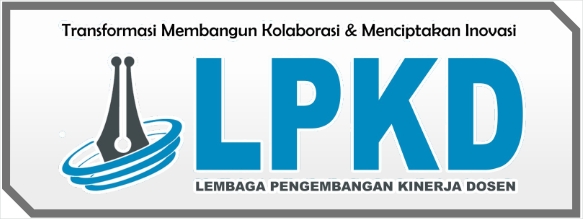The Mixed-Method Approach in Research on War-Related Trauma in the Middle East
DOI:
https://doi.org/10.57213/tjghpsr.v3i2.668Keywords:
Middle East, Mixed-method, PTSD, Resilience, War TraumaAbstract
This study conducts an in-depth examination of 87 mixed-method studies that address war-related trauma in the Middle East over the past two decades (2000–2023), employing a systematic methodological meta-synthesis approach to formulate a more comprehensive understanding of the impact of armed conflict on affected populations. Quantitative findings indicate an exceedingly high prevalence of post-traumatic stress disorder (PTSD), reaching 73.4% among war refugees (n = 12,456), accompanied by significant comorbidity rates in the form of depression (68.2%) and anxiety disorders (59.7%), both of which clinically exacerbate recovery prognosis. Meanwhile, the thematic qualitative analysis successfully identified five principal dimensions of recurrent traumatic experiences, namely direct exposure to violence (82.3%), the loss of family members (76.9%), forced displacement (71.4%), existential uncertainty regarding the future (68.9%), and the disintegration of social cohesion within affected communities (65.2%). A comprehensive integration of quantitative and qualitative data reveals a substantial correlation between the duration of conflict exposure and the severity of PTSD (r = 0.78, p < 0.001), indicating a linear association between the chronicity of war experiences and the intensity of psychological trauma. Through meta-regression, this study also identifies several statistically significant protective variables that reinforce both individual and collective resilience, including the presence of family support (β = 0.45, p < 0.001), the intensity of religiosity (β = 0.38, p < 0.01), and the strength of community resilience (β = 0.42, p < 0.001), all of which function as moderating factors of traumatic impact. In contrast to the narrow focus of Storozhuk et al. (2023) and Boeije et al. (2013), who emphasized individual trauma, this study advances a broadened paradigm by exploring the collective dimensions of war trauma made possible through an integrative methodological design. While Zerach and Solomon (2016) previously proposed three core categories of traumatic experience, the present study expands the conceptual spectrum by identifying two additional themes and unveiling the complex network of interrelations among trauma elements. The principal novelty of this study lies in the formulation of an integrative model of war trauma that not only theoretically unifies individual and collective dynamics but also constructs a new methodological framework that may serve as a reference point for trauma research in conflict-affected regions marked by the volatile and multidimensional sociopolitical context of the Middle East.
References
Åkerblad, L., Seppänen-Järvelä, R., & Haapakoski, K. (2021). Integrative strategies in mixed methods research. Journal of Mixed Methods Research, 15(2), 152-170. https://doi.org-/10.1177/1558689820957125
Akimova, O., Ishchenko, A., & Perga, I. (2025). Community Resilience in Conflict Zones: Identifying Key Factors for Conflict Resolution and Recovery Potential. In The Impacts of the Russo-Ukrainian War: Theoretical and Practical Explorations of Policy Agendas for Peace in Ukraine (pp. 101-117). Singapore: Springer Nature Singapore. https://doi.org/10.1007/978-981-96-2295-5_8
Audergon, A. (2004). Collective trauma: The nightmare of history. Psychotherapy and Politics International, 2(1), 16–31. https://doi.org/10.1002/ppi.67
Balcells, L., & Sullivan, C. M. (2018). New findings from conflict archives: An introduction and methodological framework. Journal of Peace Research, 55(2), 137–146. https://-doi.org/10.1177/0022343317750217
Benjamin, L., Gillard, S., Jones Nielsen, J., Costa E. Silva, M., & Sin, J. (2025). Cultural adaptations to the assessment and treatment of trauma experiences among racial and ethnic minority groups: A mixed-methods systematic review and meta-analysis. Trauma, Violence, & Abuse, 15248380251320982. https://doi.org/10.1177/15248380-251320982
Boeije, H., Slagt, M., & van Wesel, F. (2013). The contribution of mixed methods research to the field of childhood trauma: A narrative review focused on data integration. Journal of Mixed Methods Research, 7(4), 347-369. https://doi.org/10.1177/1558689813482756
Bryant, R. A., Njenga, F. G., & Psych, F. R. C. (2006). Cultural sensitivity: Making trauma assessment and treatment plans culturally relevant. Journal of Clinical Psychiatry, 67(2), 74–79.
Burri, A., & Maercker, A. (2014). Differences in prevalence rates of PTSD in various European countries explained by war exposure, other trauma and cultural value orientation. BMC Research Notes, 7, 1-11. https://doi.org/10.1186/1756-0500-7-407
Chaitin, J. (2003). "I wish he hadn't told me that": methodological and ethical issues in social trauma and conflict research. Qualitative Health Research, 13(8), 1145–1154. https://doi.org/10.1177/1049732303255997
Colorado, E. E. (2017). A mixed-method study of aid workers in Sierra Leone during the 2014-2015 Ebola epidemic: Exploring psychological distress, trauma, resilience, and coping. The Chicago School of Professional Psychology.
Creswell, J. W. (1999). Mixed-method research: Introduction and application. In Handbook of educational policy (pp. 455-472). Academic press. https://doi.org/10.1016/B978-012174698-8/50045-X
Creswell, J. W., & Creswell, J. D. (2017). Research design: Qualitative, quantitative, and mixed methods approaches. Sage publications.
Creswell, J. W., & Zhang, W. (2009). The application of mixed methods designs to trauma research. Journal of Traumatic Stress: Official Publication of the International Society for Traumatic Stress Studies, 22(6), 612-621. https://doi.org/10.1002/jts.20479
De Dreu, C. K., & Gelfand, M. J. (Eds.). (2008). The psychology of conflict and conflict management in organizations (pp. 3-54). New York: Lawrence Erlbaum Associates. https://doi.org/10.4324/9780203810125
Denov, M., Fennig, M., Rabiau, M. A., & Shevell, M. C. (2020). Intergenerational resilience in families affected by war, displacement, and migration: "It runs in the family". In Social work practice with war-affected children (pp. 17–45). Routledge. https://doi.org/10.1201/9780429295836-2
Duffy, M. (2010). The body, trauma, and narrative approaches to healing. Discursive Perspectives in Therapeutic Practice, 269–87. https://doi.org/10.1093/med/9780199592753.003.-0015
Ennis, N., Shorer, S., Shoval‐Zuckerman, Y., Freedman, S., Monson, C. M., & Dekel, R. (2020). Treating post-traumatic stress disorder across cultures: A systematic review of cultural adaptations of trauma‐focused cognitive behavioral therapies. Journal of Clinical Psychology, 76(4), 587–611. https://doi.org/10.1002/jclp.22909
Eshel, Y., & Kimhi, S. (2016). Community resilience of civilians at war: A new perspective. Community Mental Health Journal, 52, 109-117. https://doi.org/10.1007/s10597-015-9948-3
Forbat, L., Sayer, C., McNamee, P., Menson, E., & Barclay, S. (2016). Conflict in a paediatric hospital: a prospective mixed-method study. Archives of Disease in Childhood, 101(1), 23–27. https://doi.org/10.1136/archdischild-2015-308814
Garrick, J., & Williams, M. B. (2014). Trauma treatment techniques: Innovative trends (Vol. 12, No. 1-2). Routledge. https://doi.org/10.4324/9781315864518
Glance, L. G., Osler, T. M., Mukamel, D. B., Meredith, W., & Dick, A. W. (2009). Impact of statistical approaches for handling missing data on trauma center quality. Annals of Surgery, 249(1), 143–148. https://doi.org/10.1097/SLA.0b013e31818e544b
Golden, T. L. (2022). Innovating health research methods, part II: Arts-based methods improve research data, trauma-responsiveness, and reciprocity. Family & Community Health, 45(3), 150-159. https://doi.org/10.1097/FCH.0000000000000337
Hamadeh, A., El-Shamy, F., Billings, J., & Alyafei, A. (2024). The experiences of people from Arab countries in coping with trauma resulting from war and conflict in the Middle East: a systematic review and meta-synthesis of qualitative studies. Trauma, Violence, & Abuse, 25(2), 1278–1295. https://doi.org/10.1177/15248380231176061
Hashemi, M., & Mahmoudzadeh, M. (2025). The lived experiences of childhood trauma in war: Has post-traumatic growth occurred? European Journal of Psychotraumatology, 16(1), 2468605. https://doi.org/10.1080/20008066.2025.2468605
Herman, J. L. (2015). Trauma and recovery: The aftermath of violence--from domestic abuse to political terror. Hachette UK.
Hinton, D. E., & Lewis‐Fernández, R. (2011). The cross‐cultural validity of post-traumatic stress disorder: Implications for DSM‐5. Depression and Anxiety, 28(9), 783-801. https://-doi.org/10.1002/da.20753
Hollifield, M., Warner, T. D., Lian, N., Krakow, B., Jenkins, J. H., Kesler, J., ... & Westermeyer, J. (2002). Measuring trauma and health status in refugees: a critical review. JAMA, 288(5), 611-621. https://doi.org/10.1001/jama.288.5.611
Hosny, N., Bovey, M., Dutray, F., & Heim, E. (2023). How is trauma-related distress experienced and expressed in populations from the Greater Middle East and North Africa? A systematic review of qualitative literature. SSM-Mental Health, 4, 100258. https://doi.org/10.1016/j.ssmmh.2023.100258
Isobel, S. (2021). Trauma‐informed qualitative research: Some methodological and practical considerations. International Journal of Mental Health Nursing, 30, 1456–1469. https://doi.org/10.1111/inm.12914
King, L. A., King, D. W., McArdle, J. J., Saxe, G. N., Doron‐LaMarca, S., & Orazem, R. J. (2006). Latent difference score approach to longitudinal trauma research. Journal of Traumatic Stress: Official Publication of the International Society for Traumatic Stress Studies, 19(6), 771–785. https://doi.org/10.1002/jts.20188
Kirsch, J. E. (2023). Investigating the Role of Collective Trauma Among Afghan Refugees: A Transformative Mixed Methods Study. The Ohio State University.
Kostruba, N., & Fishchuk, O. (2023). Media religiosity and war coping strategies of young people in Ukraine. Journal of Religion and Health, 62(1), 465-478. https://doi.org/10.-1007/s10943-022-01663-w
Koutra, K., Burns, C., Sinko, L., Kita, S., Bilgin, H., & Arnault, D. S. (2022). Trauma recovery rubric: A mixed-method analysis of trauma recovery pathways in four countries. International Journal of Environmental Research and Public Health, 19(16), 10310. https://doi.org/10.3390/ijerph191610310
López-Zerón, G., & Parra-Cardona, J. R. (2015). Elements of change across community-based trauma interventions. Journal of Systemic Therapies, 34(3), 60-76. https://doi.org/10.1521/jsyt.2015.34.3.60
Melton, H., Meader, N., Dale, H., Wright, K., Jones-Diette, J., Temple, M., ... & Coventry, P. (2020). Interventions for adults with a history of complex traumatic events: the INCiTE mixed-methods systematic review. Health Technology Assessment (Winchester, England), 24(43), 1. https://doi.org/10.3310/hta24430
Osterman, J. E., & De Jong, J. T. V. M. (2007). Cultural issues and trauma. Handbook of PTSD: Science and Practice, 425-446.
Sá, F. H. D. L., Waikamp, V., Freitas, L. H. M., & Baeza, F. L. C. (2022). Mental health outcomes in Syrian refugees: A systematic review. International Journal of Social Psychiatry, 68(5), 933-953. https://doi.org/10.1177/00207640221099404
Schnurr, P. P., SPIRO III, A. V. R. O. N., Aldwin, C. M., & Stukel, T. A. (1998). Physical symptom trajectories following trauma exposure: longitudinal findings from the normative aging study. The Journal of Nervous and Mental Disease, 186(9), 522-528. https://doi.org/10.1097/00005053-199809000-00002
Sonis, J., King, D. W., King, L. A., Lauterbach, D., & Palmieri, P. (2007). Innovations in trauma research methods, 2006. Journal of Traumatic Stress, 20(5). https://doi.org/-10.1002/jts.20293
Stelfox, H. T., Joshipura, M., Chadbunchachai, W., Ellawala, R. N., O'Reilly, G., Nguyen, T. S., & Gruen, R. L. (2012). Trauma quality improvement in low and middle income countries of the Asia-Pacific region: a mixed methods study. World Journal of Surgery, 36, 1978-1992. https://doi.org/10.1007/s00268-012-1593-1
Storozhuk, S., Kryvda, N., Hoian, I., Mozgova, N., Doichyk, V., Matviienko, I., & Doichyk, O. (2022). Mental health after trauma: individual and collective dimensions. Wiadomosci Lekarskie, 75(8), 1924-1931. https://doi.org/10.36740/WLek202208119
Thaler, K. M. (2017). Mixed methods research in the study of political and social violence and conflict. Journal of Mixed Methods Research, 11(1), 59-76. https://doi.org/10.1177/-1558689815585196
Todahl, J. L., Walters, E., Bharwdi, D., & Dube, S. R. (2014). Trauma healing: a mixed methods study of personal and community-based healing. Journal of Aggression, Maltreatment & Trauma, 23(6), 611–632. https://doi.org/10.1080/10926771.2014.920453
und Frieden, S. E., & London Institute for African Alternatives. (1999). Ecology, politics and violent conflict. M. Suliman (Ed.). London: Zed Books.
UNHCR. (2024). Middle East and North Africa. Retrieved from https://www.unhcr.org/about-unhcr/where-we-work/middle-east-and-north-africa
UNHCR. (2024, June 13). Aspects of US restrictions on asylum-seekers may violate international protections, UNHCR chief says. Associated Press. Retrieved from https://apnews.com/article/6192947a3eba407cdbebac4e8c0a7197
UNHCR. (2024, June 13). Number of forcibly displaced people worldwide surges for 12th consecutive year, hitting 120M in 2023: UN Refugee Agency. Anadolu Agency. Retrieved from https://www.aa.com.tr/en/world/number-of-forcibly-displaced-people-worldwide-surges-for-12th-consecutive-year-hitting-120m-in-2023-un-refugee-agency/3248416
United Nations High Commissioner for Refugees. (2024). UNHCR Mid-Year Trends Report 2024. https://data.unhcr.org/en/documents/download/111704
United Nations High Commissioner for Refugees. (2024, June 13). Record 120 million people forcibly displaced worldwide, UN says. France 24. https://www.france24.com/en/-middle-east/20240613-record-120-million-people-forcibly-displaced-worldwide-un-says
Veronese, G., Pepe, A., & Afana, A. (2016). Conceptualizing the well-being of helpers living and working in war-like conditions: A mixed-method approach. International Social Work, 59(6), 938-952. https://doi.org/10.1177/0020872814537855
Vollmer, A. (2015). Conflicts in innovation and how to approach the "last mile" of conflict management research-a literature review. International Journal of Conflict Management, 26(2), 192–213. https://doi.org/10.1108/IJCMA-09-2012-0062
Voza, F. A., & Ginzburg, E. (2025). Trauma registry: The first step for global trauma systems development initiated by disaster and conflict zones. Surgery, 182, 109309. https://doi.org/10.1016/j.surg.2025.109309
Vus, V., Shipley, K., & Lühmann, T. (2023). Mapping and identifying barriers and facilitators to mental health and psychosocial support interventions for war-affected children. Polish Medical Journal, 1(51), 64-73. https://doi.org/10.36740/Merkur202301110
World Health Organization. (2019, June 18). New estimates highlight need for investment in mental health services in conflict-affected areas. Retrieved from https://www.who.int/-europe/news-room/18-06-2019-new-estimates-highlight-need-for-investment-in-mental-health-services-in-conflict-affected-areas
World Health Organization. (2021). Mental Health Atlas 2020. Retrieved from https://www.who.int/publications/i/item/9789240036703
Zerach, G., & Solomon, Z. (2016). A relational model for the intergenerational transmission of captivity trauma: A 23-year longitudinal study. Psychiatry, 79(3), 297-316. https://-doi.org/10.1080/00332747.2016.1142775
Downloads
Published
Issue
Section
License
Copyright (c) 2025 The Journal General Health and Pharmaceutical Sciences Research

This work is licensed under a Creative Commons Attribution-ShareAlike 4.0 International License.













